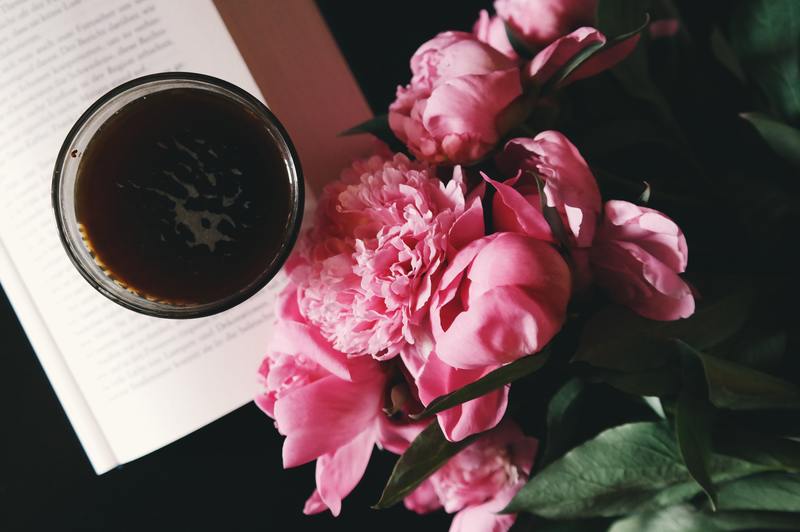Peonies are long-lived fabulous plants that do not require much maintenance. However, knowing how to get rid of mildew on peonies can save the day since they can get fungal diseases.
Peonies have fragrant, bright, and delicate petals that make gardens fabulous. Isn’t it a waste to let mildew destroy the beauty peonies hold?

If you have any mildew problems with your precious peonies, you better take a look at this article! We will help you identify mildew, its causes, and how you can get rid of them.
What Causes Mildew To Arise In Peonies?
Peonies lose their beauty due to powdery mildew. This fungal disease usually happens from late spring to early summer.
Mildew on peonies often occurs because of hot temperatures with high humidity. For example, summer with frequent rainfall can lead to mold growth on plants.
Moreover, high nighttime humidity allows spores to grow, while low daytime humidity makes them scatter throughout the other plants.
Peonies in shaded areas are also susceptible to mildew infection. Due to poor air circulation, overgrown and crowded plants are also prone to this fungal disease.
Unfortunately, mildew spores can transfer through insects and air from one plant to another. Even the vibrations from raindrops can cause these spores to spread to nearby peonies.
If you want to know whether your peonies have been infected by mildew, here is how to identify powdery mildew.
What Happens To Peonies When Infected With Mildew?
Powdery mildew is often a result of fungi growth on plants from late June to September. It does not kill plants and flowers, but it makes them more susceptible to diseases and pests.
Infected peonies tend to become weaker, bloom less, and grow slower. It begins on the lower leaves and soon affects the entire plant.
Molds on peonies also lead to dryness and discolorations. Due to powdery mildew, the flower may turn white or light grey, while the leaves may become yellowish.
With these effects, peonies become unattractive. It will have a distorted or stunted appearance that looks aesthetically unpleasant.
Aside from that, infected peonies lose their leaves. They can eventually fall from the plant.
Fortunately, powdery mildew on peonies does not lead to various health problems in people. If you want more details about the appearance of molds in plants, check this article on what does powdery mildew look like.
How Can You Get Rid Of Mildew In Peonies?
Regrettably, mildew-infected peonies are difficult to cure. In this case, prevention can be the only answer.
Since there is no specific way to cure peonies with mildew, we offer you these tips instead. It is best to ensure that your peonies are safe before any mold gets into them.
Tip #1. Consider placing your peonies under full sun. Ensure that there is also excellent air circulation in your garden space.
Tip #2. Remove all debris from infected peonies during the fall season. In this way, you can avoid spreading the mold growth until the following months.
Tip #3. Excellent sanitation also helps in getting rid of mold growth risks. You may remove and cut peonies’ infected parts every season.
Tip #4. You may also give proper maintenance to your peonies. Water them every morning, put fertilizers, and keep the surroundings clean.
Tip #5. Spray fungicides on your peonies every 10 to 14 days before mildew becomes present. It helps prevent any powdery mildew growth on your plants.
Tip #6. If your garden’s location makes your plants susceptible to mildew, consider moving them to a different place. Ensure to put them in a suitable space where they can grow better.
What Are The Treatments You Can Use For Removing Mildew?
Since prevention is the only way to avoid mildew, here are five home remedies you can use for this mildew problem. You can choose what suits your preferences or what works best in your situation.
1. Powdery mildew fungicide
You can use organic fungicides that contain sulfur contents. It works best as prevention and treatment for mildew growth.
2. Baking soda mixture
You will need to mix one tablespoon of baking soda, half a teaspoon of liquid soap, and a gallon of water. Remember not to use detergents for the liquid soap.
3. Milk
Create a mixture of one part milk and two to three parts of water. This solution prevents mildew and boosts your peonies’ immune system.
4. Potassium bicarbonate
Potassium bicarbonate solution works better than baking soda. To make this, you will need to mix one tablespoon of potassium bicarbonate and half a teaspoon of liquid soap in one gallon of water.
5. Neem oil
Lastly, you can use neem oil as it is. If not, you can mix it with other solutions for better results.
Conclusion
You can always maintain the beauty and fragrance of your plants by understanding these tips on how to get rid of mildew on peonies. Though there are no specific ways of doing so, preventing it is your best option.
Always remember that prevention is better than the cure!
